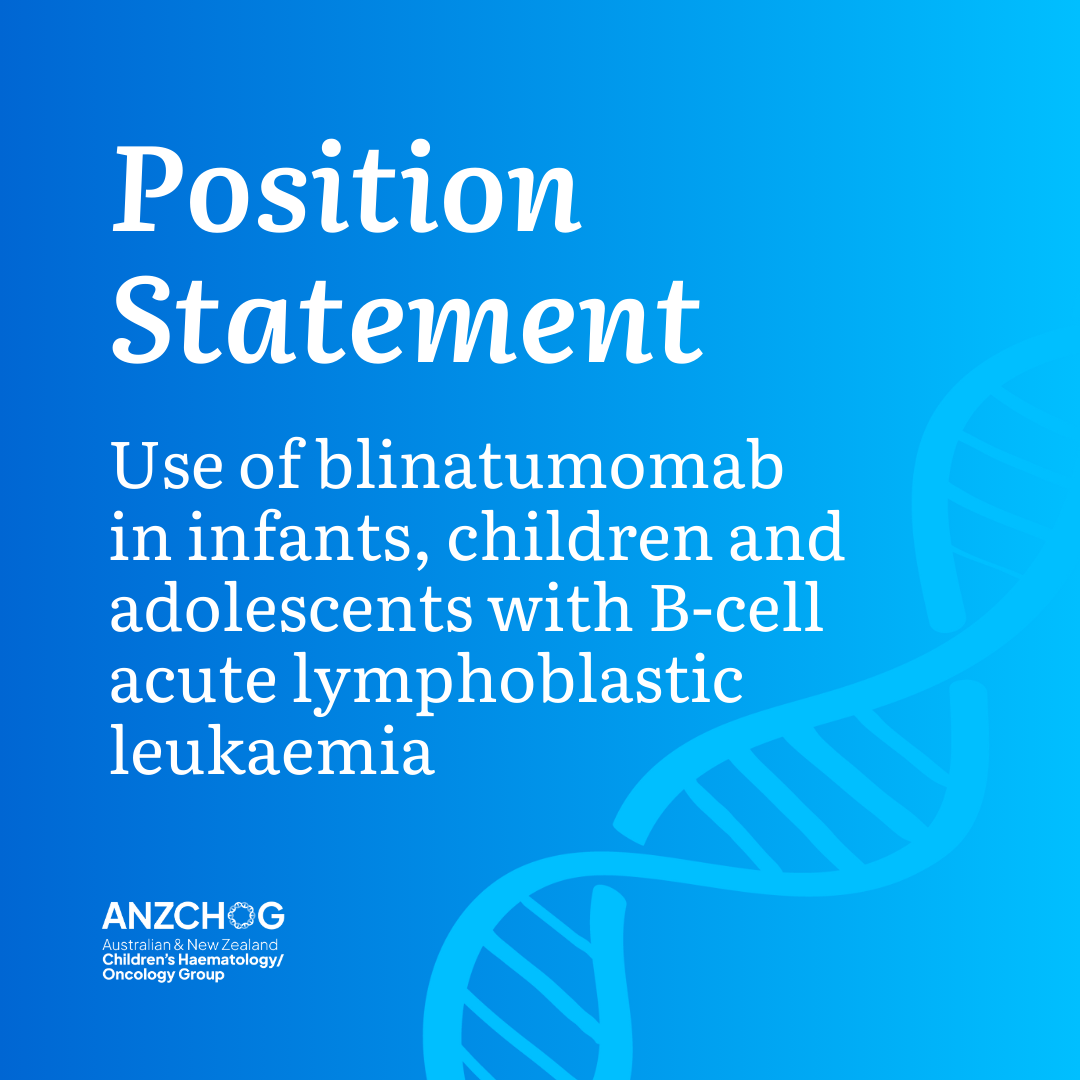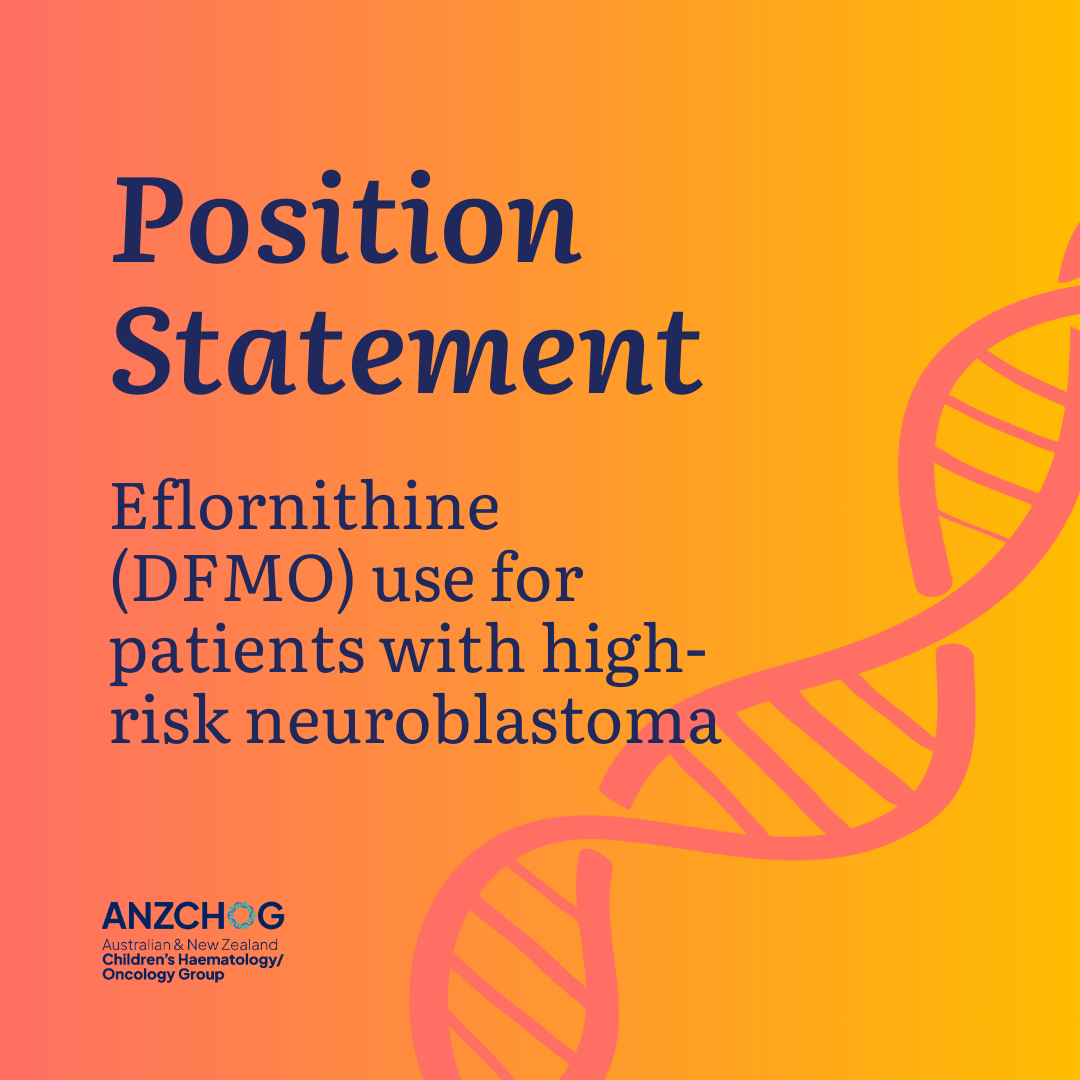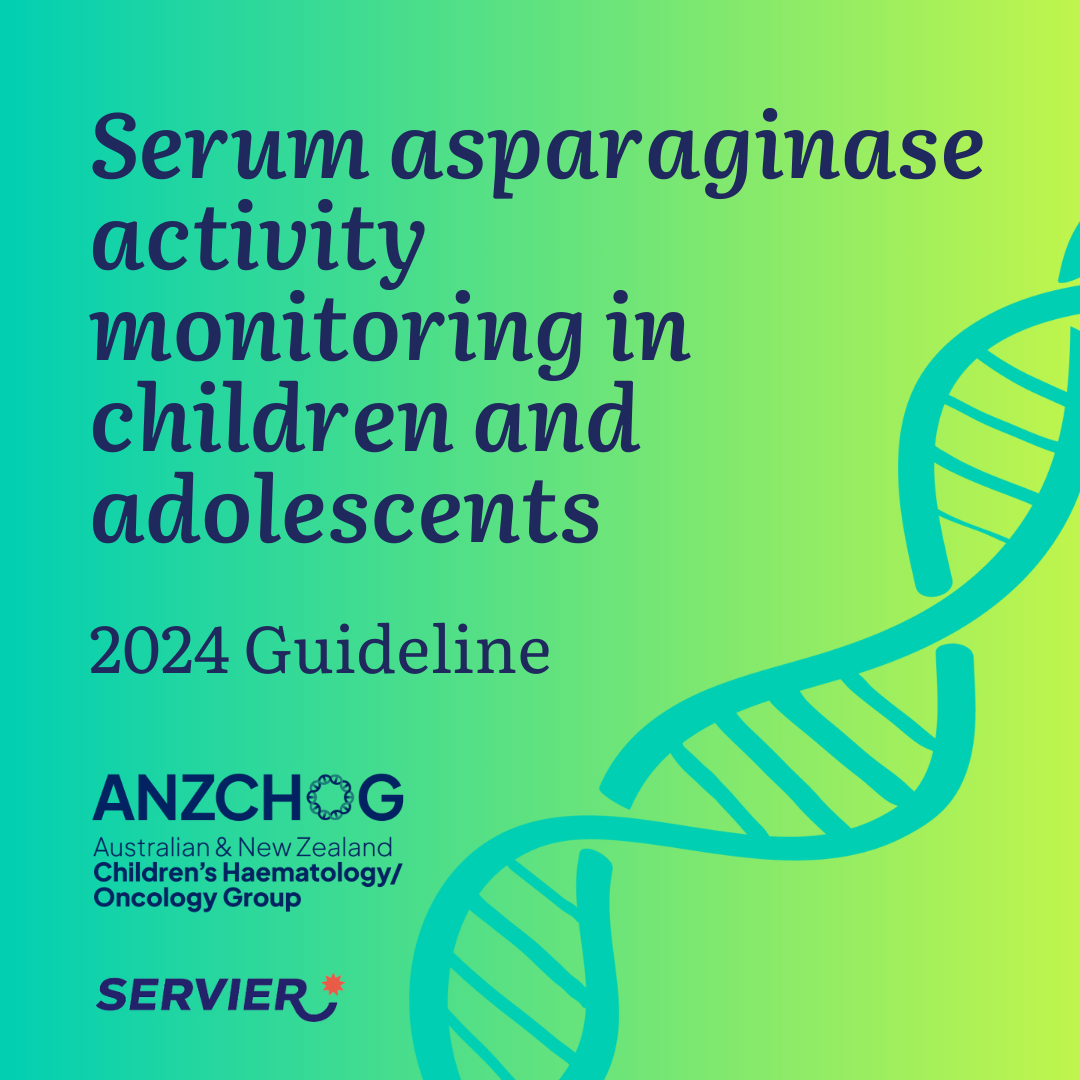Use of blinatumomab in infants, children and adolescents with B-cell acute lymphoblastic leukaemia
Position Statement | Updated 4 September 2024
To ensure consistency of therapy for infants, children and adolescents being treated for B-ALL across Australia and New Zealand and to enable equity of access, the ANZCHOG Leukaemia & Lymphoma group has published a position statement on the use of blinatumomab in infants, children and adolescents with B-cell acute lymphoblastic leukaemia.
Results from two pivotal paediatric frontline studies have now shown significant improvement in survival outcomes with the addition of blinatumomab to chemotherapy for both infants and children.
Eflornithine (DFMO) use for patients with high-risk neuroblastoma
Position Statement | Updated 23 August 2024
The ANZCHOG Solid Tumour Group has issued an endorsed position statement on the use of Eflornithine (DFMO) for patients with high-risk neuroblastoma in Australia and New Zealand.
Serum asparaginase activity monitoring in children and adolescents
Guidelines | August 2024
Asparaginase is a critical component of modern multi-agent chemotherapy regimens for leukaemia/lymphoma and has been shown to significantly improve outcomes.
This guideline, produced by the ANZCHOG Leukaemia & Lymphoma Group and distributed by Servier, has been written to assist Australasian clinicians in implementing best practice in the use of the different preparations of asparaginase and in using and interpreting serum asparaginase activity assays (SAA).
Management of children with DIPG
Position Statement | 13 May 2024
The ANZCHOG Central Nervous System (CNS) Tumour Group has recently published a position statement for the management of children with Diffuse Intrinsic Pontine Glioma (DIPG) in Australia and New Zealand.
DIPG is a high-grade glioma and is one of the most aggressive childhood cancers, remaining essentially incurable. Around 20–30 children in Australia and New Zealand are diagnosed with the disease each year.
To read the full, open-access article click here.



